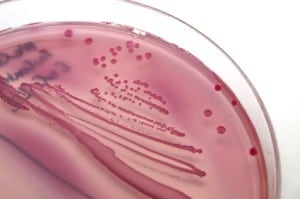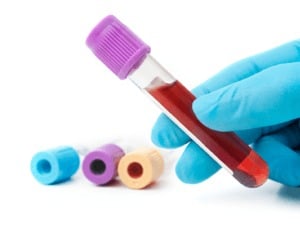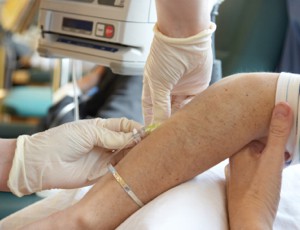Infectious complications associated with parenteral nutrition

“In our study, patients who needed PN had an overall CLABSI rate of 6.47 per 1000 catheter-days. These outcomes were not associated with PN and catheter characteristics studied after adjustment for catheter time” Comerlato et al (2020).
Vascular access in kidney transplant recipients

“In this review article, we will address the common vascular access procedures and complications among kidney transplant recipients” Karim et al (2020).
Complications and pitfalls of central venous port catheters

“This study was evaluated the early and late noninfectious complications and present precautions and pitfalls to handle these complications” Ince et al (2020).
Position statement for central venous catheterization and management

“This document makes recommendations about various aspects of resource preparation, infection control, prevention of mechanical complication and surveillance related to short-term central venous catheterization” Javeri et al (2020).
What are the factors affecting internal jugular vein size?

“There is a paucity of research on the shape of internal jugular vein (IJV) and their association with an individual’s morphology and various chronic diseases” Jeon et al (2020).
Review of outpatient parenteral antimicrobial therapy program in Japan

“Our experience shows that OPAT is a safe and feasible practice not only for efficient bed utilization and medical cost savings but also for better antimicrobial stewardship” Tase et al (2020).
Provision of iron infusions in residential aged care facilities

“To examine the feasibility of developing an in-reach parenteral iron infusion service to residents of residential aged care facilities (RACFs)” Zinsaz et al (2020).
Cultures of needleless connectors identify catheter colonization and CRBSI

“Our objective was to determine whether there is a cut-off in the needleless connectors’ (NCs) cultures that when combined with skin cultures it was as efficient as conventional superficial cultures to rule-out catheter colonization (CC) and catheter-related bloodstream infection” Pérez-Granda et al (2020).
What are the risk factors of PICC-related symptomatic thrombosis?

“Patterns and risk factors of peripherally inserted central venous catheter-related symptomatic thrombosis events in patients with malignant tumors receiving chemotherapy” Chen et al (2020).
Comparison of ultrasound-guided versus traditional arterial cannulation

“We sought to determine whether ultrasound-guided arterial cannulation (USGAC) is more successful than traditional radial artery cannulation (AC) as performed by emergency medicine (EM) residents with standard ultrasound” Wilson et al (2020).
Safety checklist implementation CVAD duration in pediatric cardiac ICU patients

“Our study demonstrated an unexpected increase in mean CVC duration after the implementation of a safety checklist designed to decrease nonessential CVC days” Sahulee et al (2020).
Safety of OPAT in selected children with cystic fibrosis

“Pulmonary exacerbations (PExs) are common in individuals with cystic fibrosis (CF). Data regarding outcomes of outpatient parenteral antimicrobial therapy (OPAT) in children are sparse” Com et al (2019).
Risk factors for difficult peripheral IV cannulation and vascular access team referral – CE activity

“The aim of this study is to consider these risk factors, to determine the influence of the hospital setting, to examine the association between DPIVC and the different techniques of catheter insertion and to analyse the importance of the clinician’s experience in this context” Rodriguez-Calero et al (2020).
Factors affecting superficial vein visibility at the upper limb

“The present results confirmed that vein depth, skin color b*, and gender strongly influenced vein visibility at the upper limb. The cutoff for vein depth was 2.3 mm” Mukai et al (2020).
Healthcare-associated infections in neonatal intensive care units

“The aim of this study was to analyze the results of surveillance of HAIs in a III level NICU in Naples, Italy during 2013-2017 and to compare with those obtained during 2006-2010” Scamardo et al (2020).
Peripheral vascular access for therapeutic plasma exchange

“Therapeutic plasma exchange (TPE) is used in the treatment of many diseases. At present, peripheral vascular access (PVA) is an underutilized method of vascular access in TPE. It should be considered more frequently due its relatively low risk for adverse events, particularly infections” Barth et al (2020).
Permanent portal venous access in a porcine animal model

“Permanent portal venous access through PVC in mini pigs is achievable by continuous infusion of low-dose heparinized NaCl solution” Oldhafer et al (2020).
Implantable port placement challenges in a patient with tattoos

“As the population or patients with tattoos increase, providers are challenged with how to place an implantable port without altering or destroying the design of the tattoo within the operative field” Rash and Dickey (2020).
Clinical features and related factors of PICC-related UEDVT

“The clinical features and related factors of PICC-related upper extremity asymptomatic venous thrombosis in cancer patients” Wang et al (2020).
Gentamicin dosing case study in a major burned patient

“Gentamicin pharmacokinetic analysis was performed in a major burn victim with 90% of total body surface area affected and complicated by septic shock” Gatti (2020).
Long-term vascular access in differently resourced settings

“In this review article, we discuss the indications for long-term vascular access, the types of devices available, the state of the art of central venous cannulation and device placement” Milford et al (2020).
Sodium bicarbonate infusion and altered acid-base status

“The data indicate that the fate of administered bicarbonate drives the internal distribution and the external disposal of sodium, the co-administered cation, and is responsible for the early, but non-progressive, osmotic inactivation of a fraction of the retained sodium” Adrogué et al (2020).
Intravenous infusion with steel needles in pediatric outpatient care
“To compare the application effects of venous indwelling needles and intravenous infusion with steel needles in pediatric outpatient care and to observe the complications of the two approaches” Sun and Yang (2020).
Reducing infusion clinic wait times using quality improvement

“Implementation of a fast-track clinic title and improving communication resulted in a significant reduction in wait times for patients not requiring laboratories on the day of treatment” Plourde et al (2020).
Using health information technology in ambulatory cancer care

“This study focused on patient safety issues in information management developing from health information technology (HIT) use in oncology ambulatory infusion centers” Pfeiffer et al (2020).
Efficacy and safety of a Belgian tertiary care outpatient parenteral antimicrobial therapy

“The University Hospitals Leuven OPAT program is associated with a high level of clinical cure and low all-cause readmission and adverse event rates” Quintens et al (2020).
6th WoCoVA postponed until 7th to 9th April 2021

“After making some tough decisions, we are happy to announce that the 6th WoCoVA will be postponed to 7-9 April 2021” WoCoVA (2020).
Implementation of a safe and effective intravenous iron infusion protocol to prevent skin staining

“To avoid medicolegal action and patient dissatisfaction, it is essential that patients are informed of potential skin staining and an evidence-based administration protocol is utilised” Crowley et al (2020).
Reason for post central venous catheter insertion chest radiograph

“A routine postprocedural chest radiograph had been a safe, checklist-based final step of the procedure, since the start of central venous catheter insertion for hemodialysis to check the position of the catheter tip and to rule out complications” Parmar (2020).
Intravenous versus intraosseous administration of drugs during cardiac arrest

“To perform a systematic review of the literature on intravenous (IV) vs. intraosseous (IO) administration of drugs during cardiac arrest in order to inform an update of international guidelines” Granfeldt et al (2020).

